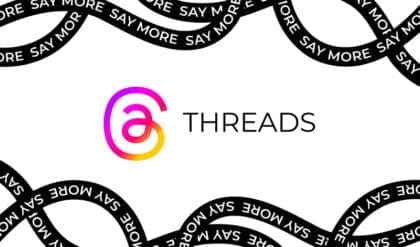Introduction to Facebook Stories
In the digital age, swiftly capturing your audience’s attention is crucial for building a connection. Facebook Stories, a feature inspired by Snapchat, allows individuals and businesses to share ephemeral content that lasts for 24 hours. This feature has become popular among marketers looking to foster a more authentic and engaging relationship with their audience. Below is an introduction to Facebook Stories and a discussion of their significance in the digital marketing landscape.
What are Facebook Stories?
Facebook Stories are short, 24-hour-lasting visuals and videos that appear at the top of the Facebook app. They provide a space for sharing fleeting moments without them being a permanent part of your profile. Here’s a closer look at their characteristics:
- Ephemeral Nature: The content shared as a Facebook Story is temporary, meaning it disappears after 24 hours, making it a more spontaneous and less polished way of sharing.
- Visual Format: Facebook Stories are primarily visual, allowing images and videos up to 20 seconds long.
- Interactive Elements: They can include various interactive elements like polls, questions, stickers, and more, making them a tool for engaging with your audience in a fun and informal way.
- Direct Sharing: Stories can be shared with everyone or selected friends, giving you control over who sees your content.
Importance of Facebook Stories
Facebook Stories have carved a niche in the rapidly evolving digital marketing landscape due to their unique features. Here’s why they are important:
- Increased Engagement: The interactive and visual nature of Facebook Stories encourages more engagement from the audience.
- Authentic Connection: They provide a platform for sharing candid and behind-the-scenes content, fostering a more authentic connection with the audience.
- Higher Visibility: Stories are displayed at the top of the Facebook app, granting them higher visibility than regular posts.
- Versatile Content Sharing: They offer a universal platform for sharing various types of content, including promotions, updates, or user-generated content.
- Drive Traffic: With the right strategy, Facebook Stories can be used to drive traffic to your website or other platforms.
Potential for Marketing
Facebook Stories hold immense potential for marketing purposes. They offer a less formal and more engaging way to connect with the audience, promote products or services, and drive traffic to other platforms. By incorporating Facebook Stories into your social media strategy, you can tap into a medium that is growing in popularity and engagement.
In summary, understanding Facebook Stories and their potential for digital marketing is crucial for brands looking to remain relevant and engaging in social media. They offer a unique, engaging, and effective way to connect with your audience, share updates, and promote your brand in a creative and interactive manner.
Creating Engaging Facebook Stories
Facebook Stories offers a unique platform to engage with your audience in a more informal and creative way. Here’s a guide on how you can create engaging Facebook Stories:
Visual Content
Visuals are the essence of Facebook Stories. They should be vibrant, compelling, and resonate with your audience.
- High-Quality Images: Use high-resolution images to ensure your stories look professional and appealing.
- Videos: Short videos can be more engaging than static images. They provide a dynamic way to share information or tell a story.
- Creative Graphics: Utilize graphics, animations, and text overlays to make your stories more exciting and informative.
Utilizing AR Effects
Augmented Reality (AR) effects add a fun and interactive element to your stories.
- Filters and Effects: Use AR filters and effects to add a playful or artistic touch to your stories.
- Custom AR Effects: If possible, create custom AR effects that represent your brand or a specific campaign.
Including Interactive Elements
Interactive elements encourage your audience to engage with your stories.
- Polls and Questions: Use polls and questions to gather feedback, understand your audience’s preferences, or just for fun.
- Swipe-Up Links: If your page is eligible, utilize swipe-up links to direct viewers to your website or a particular landing page.
- CTAs: Include clear call-to-actions encouraging viewers to swipe up, reply, share, or take other desired actions.
Storyboarding
Planning your stories ahead of time ensures they flow well and convey the intended message.
- Sequence: Plan the line of your stories to ensure they tell a coherent story or convey a clear message.
- Consistency: Maintain consistency in the style and tone of your stories to uphold your brand identity.
Timely and Relevant Content
Posting timely and relevant content can boost engagement.
- Trending Topics: Capitalize on trending topics or current events that are relevant to your brand.
- Special Occasions: Create stories about holidays, seasons, or special events within your industry or community.
User-Generated Content (UCG)
User-generated content adds authenticity and can help build trust with your audience.
- Re-Sharing: Re-share content from your followers, especially when it relates to positive experiences with your brand.
- Contests and Challenges: Encourage user participation by running contests or challenges and sharing the entries on your stories.
Measurement and Analysis
Analyzing the performance of your stories is crucial to understand what’s working and where there’s room for improvement.
- View Counts: Monitor the number of views your stories are receiving to gauge interest.
- Engagement Metrics: Track interactions like replies, shares, and clicks on interactive elements to measure engagement.
By incorporating these strategies and continuously experimenting and analyzing, you can create engaging Facebook Stories that not only entertain your audience but also help you achieve your marketing objectives.
Metrics to Measure Success
Measuring the success of your Facebook Stories campaigns is crucial to understanding their effectiveness and optimizing future content strategies. Here’s a breakdown of important metrics to consider:
View Counts
View counts represent the number of times individuals have viewed your story:
- Total Views: This gives you a basic understanding of the reach and interest level in your stories.
- Unique Views: Understanding how many unique individuals viewed your story can provide insight into your actual reach.
Engagement Rates
Engagement metrics provide a deeper understanding of how your audience is interacting with your stories:
- Replies: The number of direct messages received in response to your stories.
- Reactions: This includes any reactions like likes, loves, or other emoticons received on your stories.
- Shares: How many times your story has been shared, either directly or posted to other users’ stories.
Click-Through Rates (CTR)
CTR is crucial if you have included call-to-actions or swipe-up links in your stories:
- Swipe-ups: The number of times users swiped up to follow the link provided in your story.
- CTA Clicks: The number of clicks on any call-to-action buttons you may have included.
Exit Rates
Exit rates help in understanding at what point people are leaving your story:
- Drop-offs: Identifying the specific frames where viewers are exiting can help in understanding what type of content may not be resonating.
Completion Rate
This metric shows the percentage of viewers who watched your story from start to finish:
- Full Views: A higher completion rate indicates that your audience finds your content engaging and worth watching until the end.
Interactions on Interactive Elements
If you have included interactive elements in your stories, measuring interactions is essential:
- Poll Votes: The number of votes on any polls included in your stories.
- Question Responses: The number of responses to any questions you may have posed.
Follower Growth with Facebook Stories
Monitoring follower growth over time can provide insights into the long-term effectiveness of your Facebook Stories strategy:
- New Followers: Track the number of new followers gained during or following a story campaign.
Traffic to Website
If driving traffic to your website is a goal, this metric is crucial:
- Website Clicks: The number of clicks directed to your website from your stories.
Sales Conversions
For businesses, ultimately, the sales conversions matter:
- Conversions: Tracking the number of sales or desired actions completed as a result of your Facebook Stories.
By carefully analyzing these metrics, you can better understand the performance of your Facebook Stories. This information can then be utilized to tweak your strategies for better engagement and results in future campaigns. It’s all about understanding what resonates with your audience and how you can leverage Facebook Stories to achieve your marketing goals.
Actionable Marketing Tips
Leveraging Facebook Stories for marketing requires a blend of creativity, strategy, and engagement. Below are some actionable tips to make the most out of this feature:
Creating a Content Calendar for Facebook Stories
A content calendar is an essential tool to plan your Facebook Stories effectively. It helps ensure you have a steady stream of engaging content and allows you to align your stories with other marketing activities. Here’s how you can go about it:
- Content Themes: Define various themes around which your content will revolve. It could be product launches, customer testimonials, behind-the-scenes peeks, etc.
- Frequency of Posting: Determine how often you will post. Consistency is key to keeping your audience engaged.
- Special Days: Plan for special days, events, or holidays, and create relevant content that resonates with your audience.
Cross-Promoting Facebook Stories
Cross-promotion extends the reach of your Facebook Stories and drives more engagement:
- Other Platforms: Share your Facebook Stories on other social media platforms like Instagram and Twitter to reach a broader audience.
- Embed in Blog Posts: If relevant, embed your Facebook Stories in blog posts or your website to provide a richer user experience.
- Email Newsletters: Include snapshots of your Facebook Stories in your email newsletters with a call to action encouraging readers to view the full story on Facebook.
Engagement Driven Content
Creating content that drives engagement is crucial for the success of your Facebook Stories marketing:
- Interactive Elements: Use interactive elements like polls, questions, and quizzes to engage your audience.
- User-Generated Content: Encourage your followers to share their own stories related to your brand and re-share them on your profile.
- Reply to Interactions: When people interact with your stories, make sure to reply promptly to create a two-way communication and build a community around your brand.
Utilizing Hashtags and Geotags
Hashtags and geotags can help increase the discoverability of your Facebook Stories:
- Relevant Hashtags: Use relevant hashtags to reach a broader audience interested in your niche.
- Geotags: If you have a local business, using geotags can help you attract local customers.
Analyzing and Adjusting your Facebook Stories
It’s vital to continually analyze the performance of your Facebook Stories to understand what’s working and what’s not:
- Key Metrics: Monitor key metrics like view counts, engagement rates, and click-through rates to evaluate performance.
- A/B Testing: Experiment with different types of content, posting times, and interactive elements to find what resonates best with your audience.
- Feedback: Collect feedback from your audience to understand their preferences and adjust your strategy accordingly.
By incorporating these actionable marketing tips into your strategy, you can harness the power of Facebook Stories to foster engagement, grow your audience, and achieve your marketing goals.
Case Studies of Success
Brand A Case Study
Brand A, a budding fashion retailer, recognized the potential of Facebook Stories early on and decided to incorporate it into their social media marketing strategy to boost brand awareness and engagement. Here’s how they went about it:
Understanding the Audience
Before diving into creating stories, Brand A invested time in understanding their audience. They analyzed their followers’ demographics, preferences, and the type of content they interacted with the most. This groundwork helped in tailoring the content to suit the tastes and interests of their target audience.
Creating a Content Strategy
Based on the insights gathered, Brand A created a content strategy for their Facebook Stories. They decided to showcase their daily arrivals, feature customer testimonials, and share behind-the-scenes glimpses of their operations. The idea was to create a mix of content that would entertain, inform, and engage their audience.
Utilizing Interactive Features
Brand A made extensive use of interactive features available on Facebook Stories. They ran polls to gauge the preferences of their audience, used the question feature to answer queries in real time, and created swipe-up links to direct traffic to their latest collections on their website.
Collaborations and Influencer Partnerships
Collaborations played a significant role in Brand A’s strategy. They partnered with local influencers who resonated with their brand values to reach a wider audience. Through these partnerships, they could showcase their products in a real-world setting, which added a layer of authenticity to their brand.
Monitoring and Analyzing Performance
Brand A made it a habit to meticulously monitor and analyze the performance of their Facebook Stories. They looked at metrics like view counts, engagement rates, and click-through rates to understand what worked and what didn’t. This data-driven approach allowed them to tweak their strategy and improve over time.
Results
The consistent and creative use of Facebook Stories led to a noticeable increase in brand awareness and engagement for Brand A. They saw a higher number of followers, more interactions on their posts, and increased traffic to their website, which eventually translated to better sales figures.
Lessons Learned
Brand A’s case study underscores the importance of having a well-thought-out strategy for Facebook Stories. Understanding the audience, creating engaging content, utilizing interactive features, and analyzing performance are crucial steps toward leveraging Facebook Stories for brand growth and engagement.
Brand B Case Study
Brand B, a small organic food company, sought to expand its customer base and drive sales through a promotional campaign on Facebook Stories. Below is a detailed analysis of how they executed this campaign:
Identifying Campaign Goals
The primary goal for Brand B was to increase sales, but they also aimed to educate consumers about the benefits of organic food. They decided that a campaign promoting a new line of organic products via Facebook Stories would be a strategic approach to achieve both goals.
Crafting a Storytelling Approach
Brand B adopted a storytelling approach, crafting a narrative around the journey of their organic products from farm to table. They created a series of engaging stories showcasing the farming practices, the harvesting process, and the people behind the products.
Utilizing Video Content
Video content formed the core of Brand B’s Facebook Stories campaign. They produced short, captivating videos showcasing the freshness and quality of their organic products, along with testimonials from satisfied customers.
Incorporating Call to Action (CTAs)
Each story included compelling call-to-actions encouraging viewers to swipe up to learn more or make a purchase. They made sure the CTAs were clear, concise, and enticing to prompt immediate action.
Collaborations with Local Farmers
Brand B collaborated with local farmers, showcasing their stories and the benefits of organic farming. This not only provided authentic content but also created a community around their brand.
Offering Promotions
Brand B offered limited-time discounts and special offers exclusively through their Facebook Stories to incentivize purchases. This created a sense of urgency and enticed viewers to make a purchase.
Monitoring and Adapting
Throughout the campaign, Brand B closely monitored the performance metrics such as views, engagements, and swipe-up rates of their Facebook Stories. They adapted their content strategy based on what was resonating with the audience to maximize the campaign’s effectiveness.
Results
The campaign was a resounding success. Brand B experienced a significant boost in sales, increased website traffic, and gained a larger following on Facebook. Additionally, the campaign’s educational aspect helped build a loyal customer base who valued the importance of organic food.
Lessons Learned
Brand B’s success illustrates the power of a well-planned and executed Facebook Stories campaign. Engaging storytelling, clear CTAs, authentic collaborations, and an adaptive strategy were key elements that contributed to the campaign’s success, demonstrating the potential of Facebook Stories as a viable marketing channel.
Conclusion
Facebook Stories have emerged as a powerful tool in the modern digital marketing toolkit. Through their transient nature and highly visual and interactive format, they offer a unique way to foster a more authentic and engaging connection with audiences. This feature presents an opportunity to showcase a different, more personal side of your brand and share updates, promotions, and more in a creative and engaging manner.
In this guide, we have traversed through the essentials of Facebook Stories, from understanding what they are to how to create engaging content, measure success, and leverage actionable marketing tips to optimize your strategy. Also Real-world case studies of Brand A and Brand B further illuminated the potential impact and benefits of a well-executed Facebook Stories marketing strategy.
How to navigate Facebook Stories
The importance of utilizing metrics to measure success and continuously optimizing your strategy based on these insights was underscored. Moreover, the FAQs section aimed to address common queries, providing a well-rounded understanding of how to navigate Facebook Stories for marketing purposes.
As the digital landscape continues to evolve, staying updated with such engaging features and understanding how to effectively utilize them for your brand’s benefit is crucial. Whether you are just getting started with Facebook Stories or looking to enhance your existing strategy, the insights shared in this guide aim to provide a solid foundation for leveraging this feature to its fullest potential.
With creativity, strategy, and a keen eye on engagement and performance metrics, you can harness the power of Facebook Stories to not only reach a wider audience but also to foster a community around your brand, drive traffic, and ultimately, achieve your marketing goals.
Now that you are equipped with a deeper understanding and actionable tips, it’s time to start crafting compelling Facebook Stories that resonate with your audience and contribute to your brand’s digital narrative.
FAQs
Facebook Stories is a feature that has been growing in popularity due to its interactive and engaging nature. Here are some frequently asked questions (FAQs) regarding using Facebook Stories for marketing purposes:
- How often should I post on Facebook Stories? The frequency of posting on Facebook Stories can vary based on your brand’s strategy and the nature of your content. However, consistency is key to keeping your audience engaged. It’s advisable to post at least once a day to maintain a presence in the Stories feed.
- Can I use Facebook Stories for paid advertising? Yes, you can use Facebook Stories for paid advertising. Facebook offers Story Ads, which appear between stories on both Facebook and Instagram, allowing you to reach a wider audience.
- How can I track the performance of my Facebook Stories? Facebook provides insights for Pages, which include metrics for Stories. You can track metrics like reach, impressions, replies, and exits to measure the performance of your Stories.
- What types of content work best for Facebook Stories? Engaging visual content such as videos, behind-the-scenes looks, user-generated content, polls, and interactive elements tend to perform well on Facebook Stories. Experiment with different types of content to find what resonates best with your audience.
- How do I create a Facebook Story? Creating a Facebook Story is straightforward. On your Facebook app, click on your profile picture at the top of the feed where it says “Your Story.” From there, you can take a new photo or video or upload one from your gallery. You can also add text, stickers, and other effects before sharing it.
- Are Facebook Stories only visible for 24 hours? Yes, Facebook Stories are designed to be ephemeral and disappear after 24 hours. However, you can save your stories to your device or choose to feature them on your profile if you wish to keep them visible.
- Can I share my Instagram Stories to Facebook Stories? Yes, you can easily share your Instagram Stories to Facebook Stories. When posting a Story on Instagram, you’ll see the option to share it to your Facebook Story. This feature helps in maintaining consistency across platforms.
- Is there a way to schedule Facebook Stories? As of the last update, direct scheduling of Facebook Stories isn’t available on Facebook. However, some third-party social media management tools might offer this feature.
- How do I interact with viewers on my Facebook Stories? You can interact with your viewers via interactive elements like polls, questions, and CTAs. Also, reply to any direct messages or interactions generated from your Stories to build engagement.
- Can I delete a Facebook Story before it disappears after 24 hours? Yes, you can delete a Facebook Story at any time if you no longer want it to be visible. Go to your story, click on the three dots for more options, and select ‘Delete.’
These FAQs cover a broad spectrum of common inquiries regarding Facebook Stories, providing a better understanding of how to utilize this feature for marketing and engagement purposes effectively.







